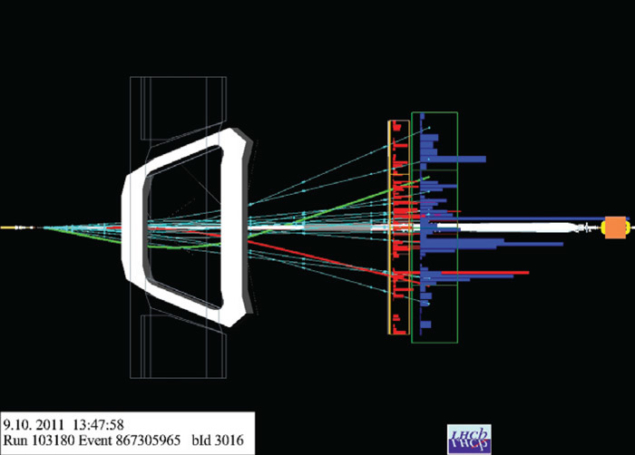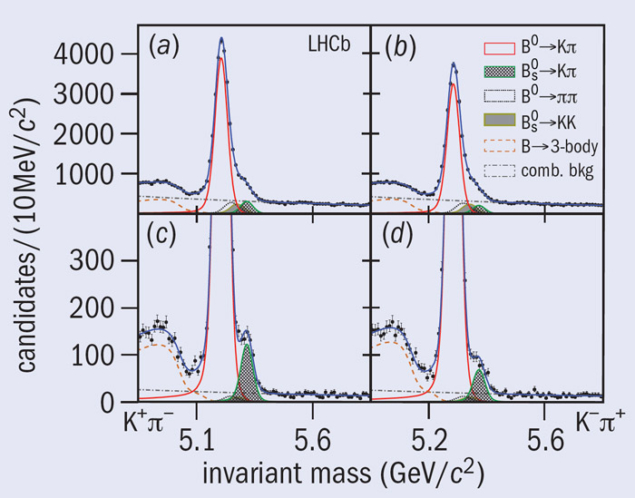In March 2012, the LHCb collaboration reported an observation of CP violation in charged B-meson decays, B± → DK±. Now, just over a year later, the collaboration has announced a similar observation in the decays in another B meson, in this case the B0s meson composed of a beauty antiquark b bound with a strange quark s. This first observation of CP violation in the decays B0s → K–π+ with a significance of more than 5σ marks the first time that CP violation has been found in the decays of B0s mesons – only the fourth type of meson where this effect has been seen. It is an important milestone for LHCb because the precise study of B0s decays is sensitive to possible physics beyond the Standard Model.

The study of CP violation in charmless charged two-body B decays provides stringent tests of the Cabibbo-Kobayashi-Maskawa picture of CP violation in the Standard Model. However, the presence of hadronic contributions means that several measurements from such decays are needed to exploit flavour symmetries and disentangle the different contributions. In 2004, the BaBar and Belle collaborations at SLAC and KEK, respectively, discovered direct CP violation in the decay B0 → K+π– and a model-independent test was proposed to check the consistency of the observed size of the effect with the Standard Model. The test consists of comparing CP violation in B0 → K+π– with that in B0s → K–π+. The B factories at KEK and SLAC did not have the possibility of accumulating large enough samples of B0s decays and, despite much effort by the CDF collaboration at Fermilab’s Tevatron, CP violation had until now not been seen in B0s → K–π+ with a significance exceeding 5σ.

Using a data sample corresponding to an integrated luminosity of 1.0 fb–1 collected by the experiment in 2011, the LHCb collaboration measured the direct CP-violating asymmetry for B0s → K–π+ decays, ACP (B0s → K–π+) = 0.27 ± 0.04 (stat.) ± 0.01 (syst.), with a significance of more than 5σ. In addition, the collaboration improved the determination of direct CP violation in B0 → K+π– decays, ACP (B0 → K+π–) = –0.080 ± 0.007 (stat.) ± 0.003 (syst.), which is the most precise measurement of this quantity to date. The four plots in figure 2 show different components of the K+π– invariant mass. The upper plots indicate the well established difference in the decay rates of B0 mesons. The enlargements in the lower plots reveal that a difference is also visible around the mass of the B0s meson. The measured values are in good agreement with the Standard Model expectation.
Only the data sample collected in 2011 was used to obtain these results, so LHCb will improve the precision further with the total data set now available, which more than trebled with the excellent performance of the LHC during 2012.








